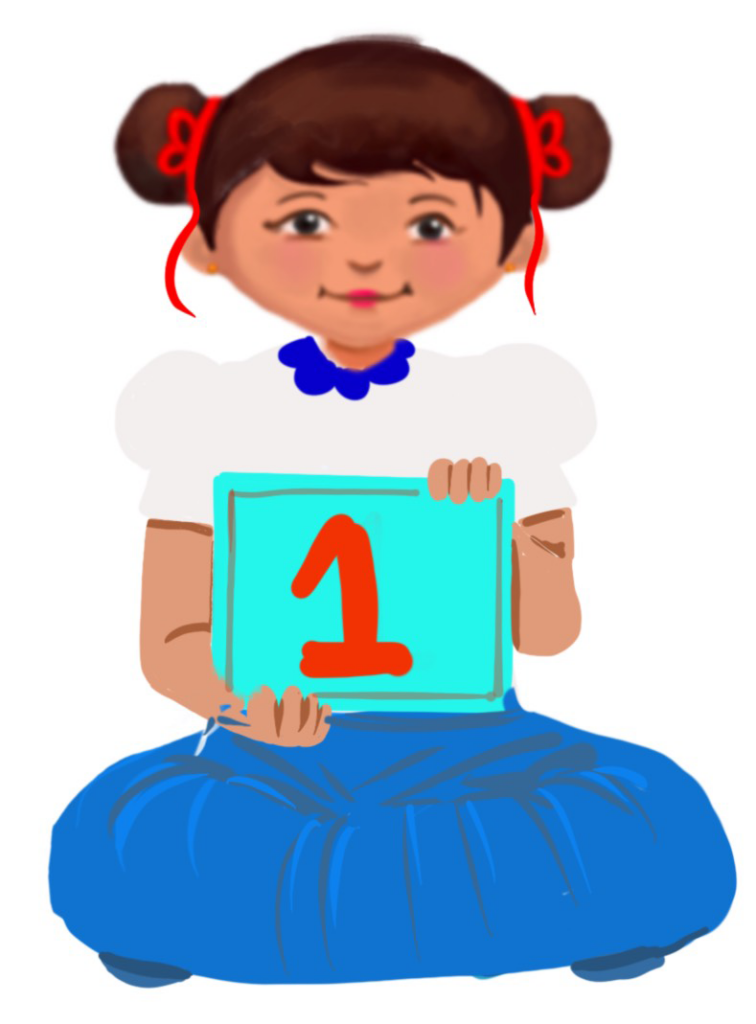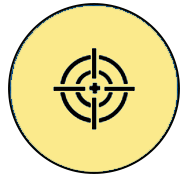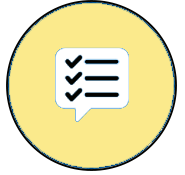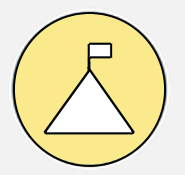
Computer Start Up and Shut Down
Class 1
 Objective
Objective
- Students will learn how to start and shut down a computer/laptop independently.
- Students will understand the importance of handling a computer properly and safely.
 Prerequisites
Prerequisites
a) The children should know what a computer is and the parts of the computer.
b) The computer and all the parts of the computer have to be connected to the power supply.
c) All children should go to the computer lab and know the rules of the computer lab.
 Goal
Goal
All
All children will be able to start and shut down their computers/laptops.
Some
Some children will attempt to start and shut down their computers/laptops with the help of their teachers.
Few
Few children will be able to start and shut down their computers/laptops correctly.
Operational Definition
All – This gives the goal, which is the minimum that the teacher must achieve for all students in the classroom.
Some – This gives the goal that the teacher may try to achieve for some students in the classroom who can achieve the suggested goal over and above the goal stated for ‘All’.
Few – This gives the goal that the teacher may try to achieve for few students in the classroom who can achieve the suggested goal over and above the goal stated for ‘Some’ and ‘All’.
Materials Required:
Technology
- An audio-enabled computer with an internet connection, smartboard projector, and screen.
- All devices like laptops, tablets and desktop computers with accessibility features enabled.
- Screen readers like JAWS and NVDA.
- Large keyboards, built-in screen magnifiers, hearing aids, text-to-speech and speech-to-text software.
- Voice recognition software like Siri, Windows Speech Recognition, etc.
- Headsets.
- Student writing or typing tools.
Teacher Materials
- Whiteboard and markers or blackboard and chalk.
- Pre-teach vocabulary cards, sight words, communication cards and worksheets.
- Lesson videos.
- Step-by-step visual instructions.
- A handout with instructions for starting and shutting down the computer.
Student Handouts
- Handout 1: Communication Cards
- Handout 2: Vocabulary Cards
- Handout 4: Trace and Learn Card
- Handout 5: Yes or No Cards
- Handout 6: Thumbs Up and Down Card
- Handout 7: Worksheets
- Handout 8: Step-by-step visual instructions
- Handout 9: A handout with instructions for starting and shutting down the computer
Print Preparation
- Communication Cards for students
- Trace and Learn Cards for students
- Vocabulary Cards for students
- Thumbs up and Thumbs down Card for students
- Yes or No Cards for students
- Pre-teach vocabulary cards, sight words cards
- Worksheets for students
- Step-by-step visual instructions
- A handout with instructions for starting and shutting down the computer
Preparation for the Activity:
- All the learning and teaching materials needed for this lesson plan must be ready before the lesson begins.
- Ensure that there are enough copies for all children. Multiple copies can be made by photocopying too.
- Please have the assistive technologies and accessibility features ready for your inclusive classroom.
Setup for transacting the lesson:
This topic must be taught in the computer lab.
1. Expected Prior Knowledge
Awareness of the extent of student’s prior knowledge of the topic will help the teacher plan and deliver the lesson appropriately.
For students:
1. Children should know the vocabulary (words, meaning of the words, spellings, pronunciation of the words as per the requirement of the lesson). This topic uses words like monitor, CPU, shut down, start, power button and UPS to explain the concept.
2. Children should be able to recall the monitor and CPU concept. The teacher could first ask the children if they can remember the parts of the computer they learned in the previous classes. Then the teacher could show pictures of the parts of the computer to revise the topic.
3. The teacher must teach words like ‘start’, ‘shut’, ‘ON’ and ‘OFF’. Start means to ‘begin’ and shut means to ‘close’.
4. The teacher could show the power button in the classroom. Switch ‘ON’ the fan or light to show ‘ON’ and switch it ‘OFF’ to make the children understand the meaning.
Use a flashcard to teach UPS. UPS means ‘Uninterrupted Power Supply’.
Worksheets, Vocabulary Cards, Sight Words:
Worksheet: Pre-Assessment
Enlarged Worksheet: Pre-Assessment
LTM: Sight Words
LTM: Vocabulary with Picture Cards
Worksheet: Sight Words
Enlarged Worksheet: Sight Words
2. Asanas
Poster: Asanas for you 1
Enlarged Poster: Asanas for you 1
Poster: Asanas for you 2
Enlarged Poster: Asanas for you 2
Video: Asanas for You-1
Video: Asanas for You-1 with ISL
Video: Asanas For You-2
Video: Asanas For You-2 with ISL
Video: Adaptations for Asanas – Part 1
Video: Adaptations for Asanas – Part 2
Adaptations and Modifications for Asanas
3. Warm-Up
Write the words ‘Start’ and ‘Shut down’
1. What is the first thing that comes to your mind when thinking of the words ‘start’ and ‘shut down’?
Possible Answers: Answers might vary, start a mixie, start and shut down a computer, start a game.
2. Why do we start a computer?
Possible Answers: To work, to play games, to draw, to watch movies, listen to music, etc.
3. Ask, ”Which button is used to start a computer?”
Possible Answers: The computer ‘start button’, the power button.
Differentiation
- Students can write down answers in their notebooks or on a slip of paper and stick it on the corkboard.
- Students can choose to write their answers or communicate their responses verbally with a friend/teacher.
- Students can draw the word or point to the picture on the Communication Card (a Communication Card handout should be provided).
- The teacher should immediately praise the student with his/her name and reward the child.
Worksheets and Communication Cards:
Worksheet: Vocabulary
Enlarged Worksheet: Vocabulary
Worksheet: Trace and Learn
Enlarged Worksheet: Trace and Learn
LTM: Thumbs Up and Down
LTM: Communication Card
LTM: Yes or No Cards
Instructions to the teacher:
Begin the topic with a pre-assessment worksheet and pre-teach the vocabulary.
4. Getting Started with a Computer
Instructions to the teacher:
- Ask the students if they have seen their parents or anyone else starting a computer or switching on the buttons, typing, etc.
- Instruct the students to observe you while you switch on the computer. Tell the students about the charger and battery if you are using a laptop. Tell the students that if they are using a laptop, it needs to be charged. Show the children how to connect the wire to the laptop for charging.
- Ask the children to observe the light on the CPU near the power button. Press the button on the CPU; the computer gets started. Next, please press the button on the monitor and point to the light once it starts.
- Tell the students to switch off the monitor when not using the computer. Show them how to shut down the computer. Ask the children to observe the lights on the CPU. They go off, and only after this should the power switch be turned off.
- Summarise the procedures for starting the computer or laptop and turning it off. Inform the students that they should start or shut down the computer only under the supervision of their teacher or family members.
Guided watching
Bring the attention of the students to the screen and say, “Let’s watch this video.”
Ask students to give a ‘thumbs up’ whenever they hear or see the word ‘switch on’ or ‘switch off’ in the video.
Play video
Video: Getting Started with a Computer
Video: Getting Started with a Computer with ISL
LTM: Steps to Start a Computer
LTM: Steps to Shut down a Computer
Informal Assessment (After playing the videos)
1. Ask, “What is a desktop?”
If needed, prompt the children to come up with a definition using language from the video.
Example: The screen that appears after the computer starts is called the desktop.
Write the term and definition on the board after the students respond.
2. Ask, “Does the computer start on its own?” (The answer is no)
3. Ask, “Do we press the power button of the computer CPU?” (The answer is yes)
4. Ask, “Do we close all the windows before shutting down the computer?” (The answer is yes)
5. Ask, “Do we switch OFF the power button after shutting down the computer?“ (The answer is yes)
Worksheet: Informal Assessment
5. Let’s Start the Computer
Switch ON the power button
Next, ON the UPS
Thirdly the CPU
Switching ON the monitor
you will be through.
The screen lights up, oh, what a show,
Ready to work, ready to go!
Video: Let’s Start the Computer
Video: Let’s Start the Computer with ISL
6. Start and Shut down the Computer
Aim: To start and shut down the computer.
Resources required: Computer systems/laptops, tablets
Setting for the activity: Individual activity/Indoor
Type of activity: Hands-on activity
Preparation of activity: Conduct the activity in a computer lab. Take the children to the computer lab.
Role of the teacher: Observer
Role of a peer buddy: The peer buddy should encourage the children with difficulties if they need help.
Procedure:
1. The teacher should play the video for the children.
2. The teacher should next demonstrate the steps to start and shut down the computer.
3. Next, the teacher should provide the handout to the students.
4. Each student should individually switch ON the computer and switch OFF the computer.
Observation: The students can start and shut down the computer.
Conclusion: This activity will make the students confident about starting and shutting down a computer.
Suggested variation in rules:
Children who are uncomfortable working on computers can switch ON a laptop or a tablet.
Video: Steps to Start a Computer
Video: Steps to Start a Computer with ISL
Video: Steps to Start a Laptop
Video: Steps to Start a Laptop with ISL
Video: Shut down the Laptop using the Keyboard
Video: Shut down a Laptop using the Mouse in Windows 10
Video: Shut down the Laptop using the Mouse Windows 11
LTM: Steps to Start the Laptop using the Keyboard
LTM: Steps to Shut down a Laptop using the Keyboard
LTM: Steps to Start a Laptop using the Mouse
LTM: Steps to Shut down a Laptop using the Mouse
7. Sequence Card Activity
LTM: Start the Computer Sequence Card
LTM: Shut Down the Computer Sequence Card
8. Try me: Getting Started with a Computer
Video: Getting Started with a Computer
9. Assessment
Worksheet: Computer Start and Shut Down
Enlarged Worksheet: Computer Start and Shut Down
Adaptations and Modifications: Computer Start Up and Shut Down
10. Assistive Technologies and Adaptive Devices
Assistive Technologies and Adaptive Devices
Teacher Resource Document
| Source and Attribution of images: All images used in the above Assets and Aids are originally created. |
| This digital material has been developed by the Sri Sathya Sai Vidya Vahini Inclusive Education Project, a unit of Sri Sathya Sai Central Trust, Prasanthi Nilayam, as a collaborative offering in the service of our nation. |